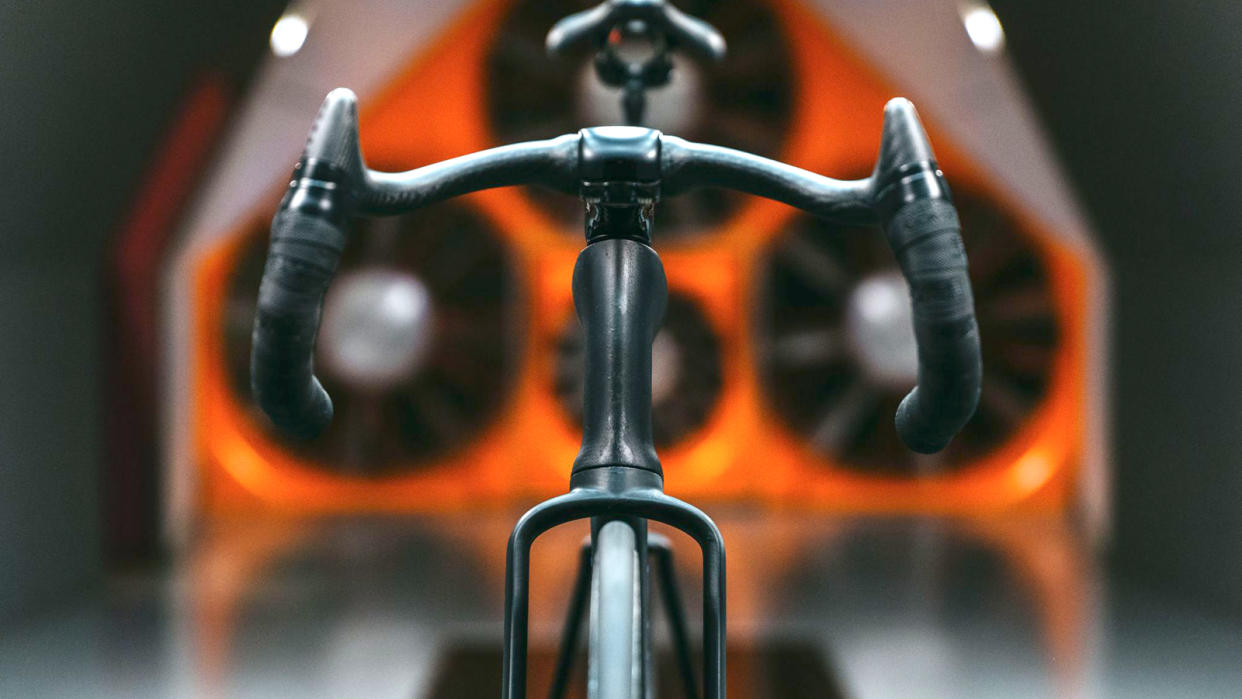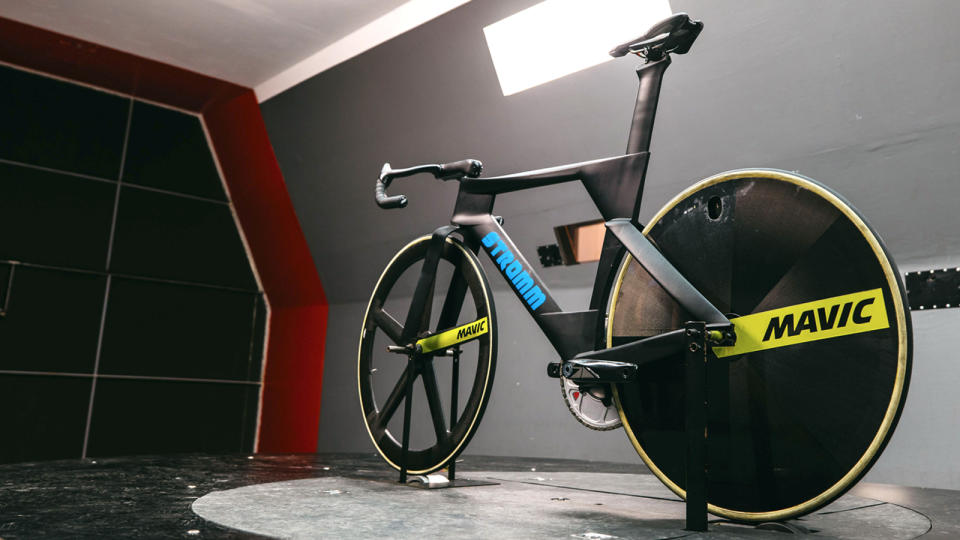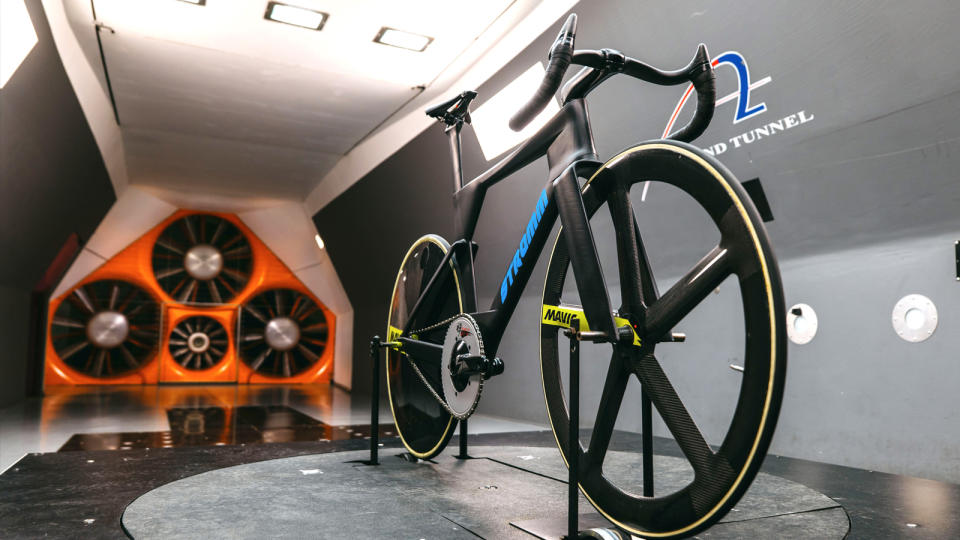Will this wild new Stromm track bike be the fastest at the Paris Olympics?

A group of self-proclaimed bike nerds in the USA have combined to create what they're calling the "first bike to truly take advantage" of the new UCI rules on frame design. Under the brand name Stromm Cycles, they have built the infrastructure to create one size, and today they're launching on Kickstarter to fund the rest of a size run.
"We are confident that we have the fastest track bike design and by July will have the fastest track bike available," said one of the engineers, Dave Koesel, whose experience includes 14 years at Felt Bicycles, plus two years each at 3T and Roval. "Once the rule changes were announced, I knew we could make a considerably faster bike."
However, in order to qualify for use at the Paris Olympics in 2024, the bike which currently exists in a quantity of one must debut at the Track Worlds in August of this year.
Over the past few years, the rules governing bike design have evolved at a fairly significant pace. Where previously frame tube cross-sections were bound by a 3:1 ratio limit that meant no tube could be more than three times wider than its depth, nowadays they can be designed up to an effective maximum ratio of 8:1, bound by minimum and maximum overall dimensions of 10mm and 80mm respectively. In addition, recent changes to rider position have doubled the amount of reach a rider can have in bunch races, bringing it from 50mm to 100mm and in line with the reach previously only allowed in track sprint races.
The team of engineers are all keen track cyclists, with Koesel himself racing both the 2022 UCI Master’s World Championship and the USA Cycling Elite National Championships.
"The reality is that you can’t seem to actually buy an FES and the $25,000 price tag for a Hope or a Felt TA meant the three of us would have to invest $75,000 collectively to have the latest bikes on the market today," Koesel added. "But those that were designed before the new UCI rules. We can make a faster bike for less than $75,000 out of pocket. So we did."
Luckily, the team, which also includes professional aerodynamicist Ben Rothaker, accomplished pro cyclist Daniel Holloway, and long-time bike manufacturer Stephen Doll, can all ride the same size frame, so they all invested their own money to create the tooling and moulds for that one size.

The bike
According to the team, the UCI's switch to 8:1 rules allow 600%+ lower drag sectionally than before. Exactly what that translates to for the final performance of a completed bike is unconfirmed, but the team believes the Stromm is "comparable or better than other world-class track frames."
Made exclusively using Toray Composite carbon, the frame is initially set to be a bunch race frame with drop handlebars, but with the ability to convert to a pursuit bike via a different handlebar later. Not unlike the Factor Hanzo or the Hope HB.T, the wide fork and seatstays make the bike largely "wheel agnostic," meaning it won't be affected by the different aerodynamic performance of different wheels. What's more, these are designed not only to encourage airflow around the rider's legs, but back inward again afterwards so as not to give following riders a 'free draft'.

Impressively, a few extra aero tricks have been included too: these include a sloping top tube and seat post design that the Stromm team says creates vortices that keep air attached to the rider's back for longer. Elsewhere, the head tube capitalises on the UCI's new 16:1 rule in this area at closer to 11:1 in depth, and is said to purposely stall at high yaw angles so that riders on outdoor velodromes don't experience handling issues. Also, the junction between the seat tube and the top tube is said to capitalise on "local yaw angles" created by the movement of the rider's legs.
Despite all the aero focus, perhaps the most evident theme in the frame is that it's built by people that will be using it, so it's been kept as simple as possible. Besides the proprietary seatpost, the rest of the bike uses industry standards, such as the 1-1/8in steerer tube, the easily-serviceable 68mm threaded bottom bracket, the dropouts that take common 100/120mm track axles, and the adjustable rear drop-out which uses a barrel, rather than needing a hex key.
Geometry-wise, the main story is the increased reach, which is designed to take advantage of the recent UCI rule change. Compared to a Look T20, a medium size frame is 33mm longer, with a 3mm shorter stack. This, according to Keosel, is to maintain a long-and-low position desired by track racers, but without having to resort to extra-long stems that can negatively affect handling.
Will it make Paris?
The UCI rules state that in order to qualify for use at the Paris Olympic games in 2024, the equipment must have been used during 2023 in an event listed in the Track Equipment Registration Procedure. Those events include the three Track Nations Cup events, all of which have passed, or the Track World Championships, starting August 3.
Therefore, if the Stromm bike is to be used at Paris 2024, the team need to find a willing user, their framesets need to be manufactured and shipped to the UK, the bikes built up, and raced, in just two and a half months.
Kickstarter
If they are going to get the bike to Paris, they're going to need buy-in - both literal or metaphorical - from a national team or federation. Unless they get lucky and find a nation full of riders at their same height, they're also going to need the tooling and moulds for the rest of the sizes required to create a size run.
According to Keosel, each mould costs well into three figures, so the purpose of the Kickstarter campaign is to raise those funds. The goals outlined by the team max out at $500,000, with shipping available around the world for varying fees.

